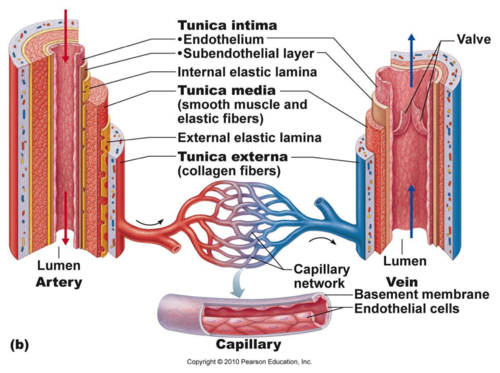Hit the Vein - the first time
- regan kenny

- May 3, 2020
- 2 min read
Vascular access is a crucial component of providing medical care. In order to better understand intravenous insertion - let's review the anatomy and physiology of veins.
Veins carry deoxygenated blood back to the heart, also known as: venous return.
Of course there is an exception - the portal veins carry blood between capillary beds.
Did you know that our bodies contain on average - 5.0 Litres of blood!
A vein consists of three layers; the outermost portion known as the tunica externa. This is a thick, dense covering. Below, is a layer of smooth muscle known as the tunica media. The inner most layer is epithelium which is the tunica intima.

Our veins contain valves whose purpose is to prevent the back flow of blood and keep the blood moving in the positive direction.
A bifurcation is the division of two branches of the vein. Try not to poke here.
When the blood returns to the heart - it enters the superior and inferior vena cava, flows through the right atrium, through the tricuspid valve, into the right ventricle, and then pumped via the pulmonary artery into the pulmonary system to be re-oxygenated. Once the blood is full of oxygen, it returns to the left atrium via the pulmonary veins. The pumping of the blood allows it to cross the mitral valve into the left ventricle. Once in the left ventricle, it is expelled from the left ventricle across the aortic valve - where it is pumped throughout the body to bring oxygen and nourishment.
Intravenous access serves many purposes. The main ones include: medication administration, fluid administration, and blood draws. One of the numerous skills that nurses are licensed to do is intravenous initiation. It is a skill that comes with practice and requires manual dexterity. Here are some of my tips for those hard starts:
1) anchor the vein. If the skin is loose - make it taut!
2) choose the right size of cathlon 16, 18, 20, 22, 24
3) turn the exam light on
4) warm blankets
5) tourniquet!
6) wet warm towel, covered in warm blankets
7) raise the bed
8) hang the arm down
9) work distal to proximal
10) confidence in yourself! you got this!
11) vein finder (see below)
12) pure luck
And if worse comes to worse, find another nurse to give 'er a shot.
Sources:
https://en.wikipedia.org/wiki/Vein










Comments